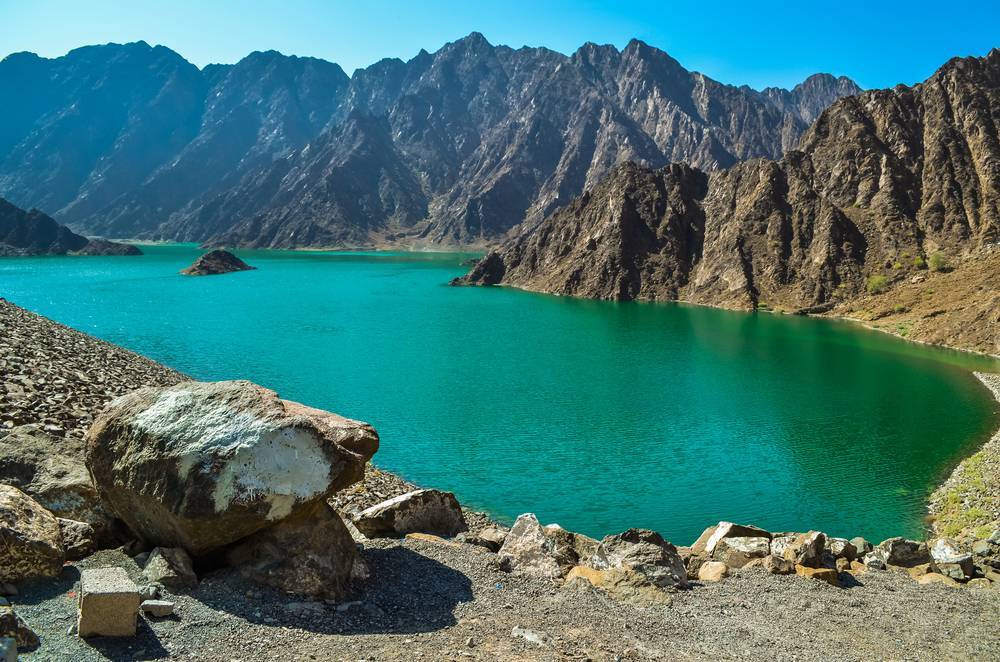Water harvesting in arid regions: from linear to cyclic urban water management solutions
Tuesday 4th July 2017

For 3,800 million years, life has been present on Earth. Over this time, it has not only sustained itself, but has flourished, diversified and constantly evolved. If there were ever lessons to be learned in long-term survival, it would be those from the natural environment around us.
However, as humans, we seem to be doing the planet, but moreover ourselves, a disservice. Our fast growing population demands housing, cities and an ever increasing level of prosperity, over exerting our planet’s resources and reducing the opportunity for future generations to enjoy a liveable planet. Rapid urbanisation across the globe has brought with it a multitude of issues; increased air pollution, ill health and significant pressure on essential resources such as food and water. Yet we are failing to mitigate these issues effectively and in a timely manner.
With more than half of the world’s population now living in cities, and this figure set to reach a mind-blowing 70% by 2050, ensuring environmentally friendly growth is paramount. Cities must address their relationship with the natural environment as a crucial part of building urban resilience for the future of their inhabitants.
We met with Joris Voeten, Urban Green Space Engineer, to get his take on how lessons from nature can be applied to the urban environment.
What can nature teach us about our managing our urban environments?
One of the most basic lessons we can learn from the world’s ecosystem is that nothing is wasted. Waste does not exist in nature: everything is used – and then re-used again. ‘Matter does not appear, nor disappear. It just changes shape’, noted French chemist Antoine Lavoisier in the 1790’s. Our current linear system of mining, manufacturing, using and discarding can lead to only one conclusion: we will ‘run out of things to make things with’.
Ecosystems account for all of the resources available to them and adjust their life processes to make the best of them. Ecosystems never ‘throw anything away’, and thus do not ‘run out of resources’ easily. A mentality we should be applying to our cities and lives.
In your view, what is the status of the modern city?
The cities of today are failing. Why do forests create an environment in which they thrive and we as humans create cities that slowly kill us? As individuals we are intelligent, but as a society we struggle to make wise decisions that aim at improving our environment for the long term, for future generations.
For example, despite the natural water cycle, humans have a linear approach towards this valuable resource. Water is brought into our cities from (natural) resources (groundwater or desalinated water) to be either consumed, polluted, or both, only to be pumped out of the city again to be processed somewhere else. Stormwater and HVAC condensate receive this same ‘waste treatment’ as well, where both these sources of water were perfectly clean and for free ‘at time and place of delivery’.
A forest does not discard water this easily. The forest will store as much rainwater as it possibly can, right there on the spot where it fell, in vegetation, in organic matter, and in the soil. The forest knows that without these precious molecules of H2O it won’t be there for much longer. Bedouin people knew this too in their long history of desert survival. Somehow, ‘modern man’ seems to have forgotten this.
How can cities mitigate water waste in the urban environment and manage it better?
The key to the success in sustainable design and strategy is to learn from nature. Instead of constantly seeking more sources of already limited clean water, we need to implement ways of better using water already available to us. Reducing irrigation water demands, collecting stormwater, using HVAC-condensate and even grey ‘waste‘ water are sources of water we can harvest and utilise. And we can do so on-site, without pumping, cleaning, or use of energy.
By adapting a cyclic approach to water management, we can reduce the demand for potable water and TSE, whilst increasing the amount of water available on-site for plant irrigation, creating precious green space at the same time.
On-site catchment, storage and capillary irrigation systems, like the Permavoid® Geocellular system, work by creating an artificial ground water level that mimicks a natural ground water level. Rather than allowing HVAC condensate, stormwater and wash down to run off into our sewer systems, this nature-based solution collects and stores water from these valuable sources to support surrounding vegetation through natural capillary irrigation.
It’s solutions just like Permavoid® that allow us to create the green spaces our urban environments desperately need to support real estate value and human health and wellbeing. Also recognised as a blue-green solution, when used in applications such as green roofs and podium decks Permavoid® minimises the buildings impact on its surroundings and the environment by creating a local, cyclic water system.
In order to survive and thrive, cities must work with nature, not against it. This means utilising all resources available to us. Through innovative and scalable solutions, such as green walls and roofs, cities can build up resilience to resource scarcity and secure a viable future for the next generation. Cities must address their relationship with nature as a vital part of strengthening themselves, not just through conservation, but by implementing designs that harness the benefits of nature as true nature-based solutions.
Contact us today to discuss the transformative solutions for your project:
Tel: +971 (0) 4 518 3000
Email: middleeast@polypipe.com
